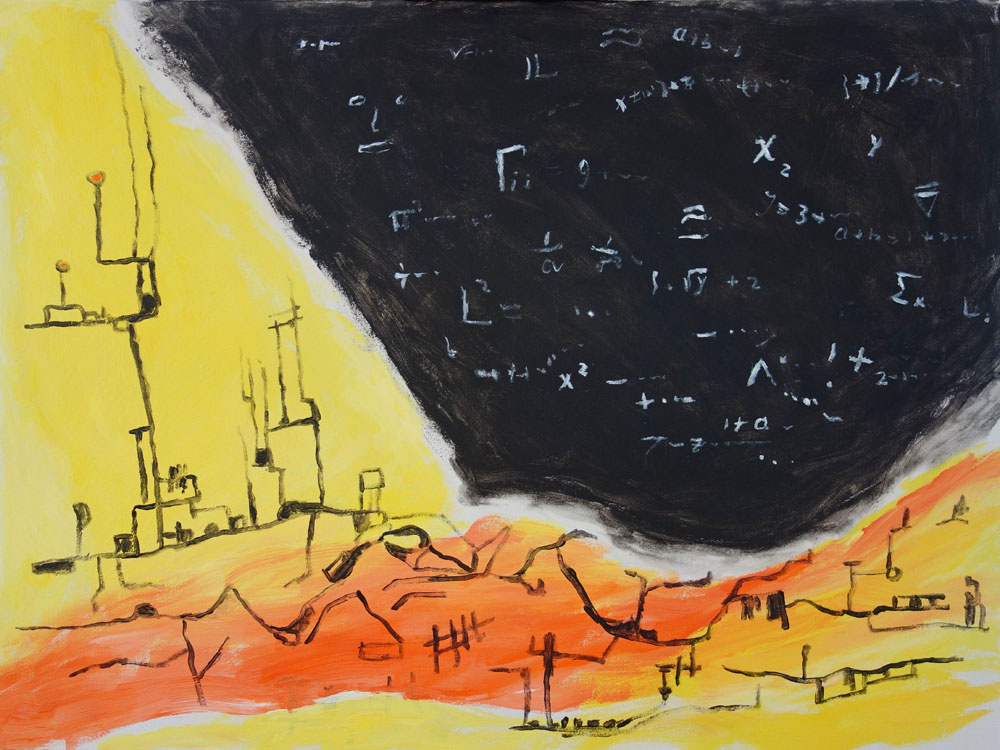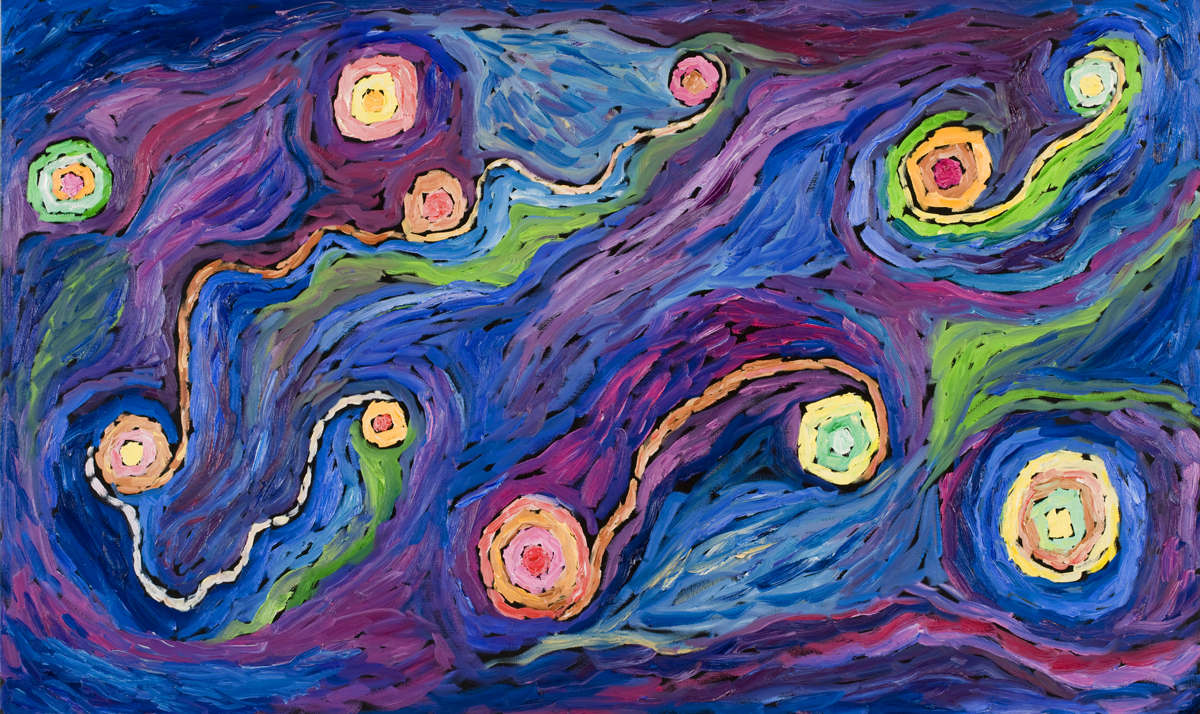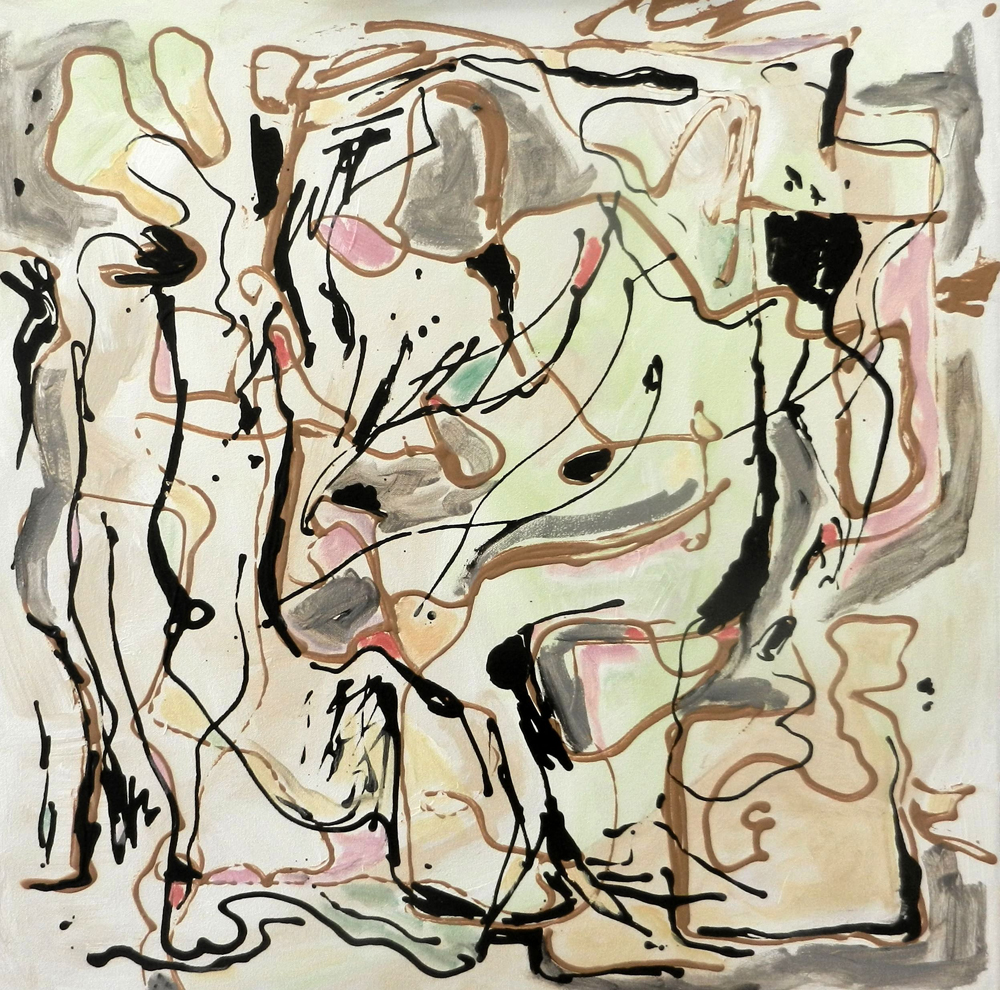Cosmic Artist Belbruno Enters a Strange New Dimension with NYC Exhibit

NEW YORK -- When mathematician and painter Ed Belbruno spent his scientific work-life calculating orbital trajectories (the paths that spacecraft take through space), he says his paintings were beautiful but straightforward. Now, grappling with cosmology and the origins of the universe, his art has changed as well.
A new collection of Belbruno's paintings, which will be on display Thursday (Oct. 22) from 5 p.m. to 9 p.m. EDT at Café Minerva in New York City, shows a leap into the unknown: art that is stranger, more chaotic and more ambitious than anything Belbruno has done before. They offer a colorful window into the mind of a mathematician processing the universe.
Belbruno is an abstract expressionist, a category used to describe such works as the splatter paintings of Jackson Pollock, so his paintings can appear baffling, if beautiful, to non-experts. But approaching them with science in mind offers quite a different view. [The Cosmic Art of Edward Belbruno (Gallery)]

"If [viewers] haven't met me, they look at those paintings, they would just scratch their head and say, 'I have no idea what this is,'" Belbruno told Space.com. But an understanding of the mathematical work Belbruno does — including cosmologyand applying chaos mathematics to space trajectories — lends a new clarity to his art, he says: "Suddenly, the different imagery in the paintings and the abstraction of the paintings makes sense to [the viewer]," he said. "That's important."

Paths through space
Belbruno began his science career working on orbital trajectories. The path of a spacecraft is influenced by the gravity of nearby bodies that are also moving, so before a craft is launched, mathematicians spend time calculating the best course from starting point to destination — one that is safe and doesn't use too much fuel. And from the beginning, Belbruno says his artwork has made it possible for his subconscious mind to grapple with the tangible dilemmas he was dealing with in the office.
For example, as described in the new documentary "Painting the Way to the Moon" (2015), Belbruno says that while he was working at NASA's Jet Propulsion Laboratory, a pastel painting helped him solve a vital spaceflight problem: how to get a spacecraft from the Earth to the moon with very little fuel, which is called a ballistic lunar capture. The craft would have to ride delicately through the transitions between the Earth and moon's gravity so it could slow down at the right time without using its engines.
Calculating such a maneuver is an incredibly complicated task. In an essay for Space.com, Belbruno wrote: "[I] let my subconscious try and find the route. I painted the Earth-moon system so fast that I couldn't think, and my hands were guided from a subconscious level."
Get the Space.com Newsletter
Breaking space news, the latest updates on rocket launches, skywatching events and more!
"When I finished the painting, […] the brush strokes of the pastel revealed a special path from the Earth to lunar orbit," Belbruno wrote. "In the pastel, one sees slightly darker pastel marks making their way from a region around the Earth to a region around the Moon. The regions reveal a somewhat circular pattern that gradually tapers off. The boundary of those regions is where the trajectory starts and ends."
Later, in 1991, the ballistic-capture strategy was put to the test when Belbruno and a colleague designed a route to take a stranded Japanese spacecraft to the moon from Earth with a severely limited fuel supply.
Incidentally, Belbruno also calculated a faster way to get to Mars— even faster, he says, than the path planned for an emergency supply probe described in the book "The Martian."
But it was after he started researching cosmology at Princeton University in New Jersey, that Belbruno says his art really took flight. It's still a bit of a puzzle how the two are connected.
"All I know is that around 2010 when my styles really exploded — and now they're going in all different directions — I noticed that my scientific work […] exploded, too," Belbruno told Space.com. Trajectories are straightforward, concrete calculations, even if complex: "You are simply going from A to B in a spacecraft," he said. "Whereas the cosmology work, and black holes, is wildly more complicated and you're dealing with the entire universe."

He can't tell which direction the feedback goes, from art to science or the other way: "Which one is feeding off the other one, I have no idea," he said. Belbruno continues to find clues to his scientific process within his artwork. As he described in a recent Op-Ed, he spent eight years grappling with how to mathematically describe the Big Bang. He then found his ultimate solution — tracking two different time scales to smoothly transition across the mathematically tricky singularity — had been foretold five years earlierin his painting "Time."
Visitors to Thursday's gallery event will be able to look into the universe as Belbruno tries to interpret it: "They're probably very curious, if [the paintings are] going to give them any science insights into our universe," Belbruno said. "And my guess is the answer's going to be 'yes.' That it enriches their understanding of the science in a way in which they didn't see previously. If that happens, I'll be really happy."
Email Sarah Lewin at slewin@space.com or follow her @SarahExplains. Follow us @Spacedotcom, Facebook and Google+. Original article on Space.com.
Join our Space Forums to keep talking space on the latest missions, night sky and more! And if you have a news tip, correction or comment, let us know at: community@space.com.

Sarah Lewin started writing for Space.com in June of 2015 as a Staff Writer and became Associate Editor in 2019 . Her work has been featured by Scientific American, IEEE Spectrum, Quanta Magazine, Wired, The Scientist, Science Friday and WGBH's Inside NOVA. Sarah has an MA from NYU's Science, Health and Environmental Reporting Program and an AB in mathematics from Brown University. When not writing, reading or thinking about space, Sarah enjoys musical theatre and mathematical papercraft. She is currently Assistant News Editor at Scientific American. You can follow her on Twitter @SarahExplains.









